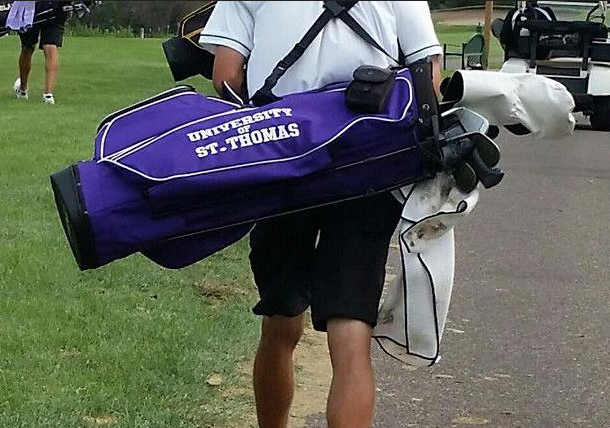History Being Made In St. Paul
By JP McNaney
Unparalleled. Historical. Unprecedented.
All three words have been used to describe the move the University of St. Thomas made just three years ago from NCAA Division III to Division I.
Most of the attention has been paid, rightfully so, to the football, basketball and hockey programs, but all 21 varsity sports sanctioned by the university moved up, and that has never been done before.
For context, in 2019, the MIAC “involuntarily removed” the founding members of the of the 100-year-old conference for “competitive balance.” With an enrollment that was almost double the next largest institution and an all-sports dominance that became unbearable for other schools, the Tommies were tossed out.
The move from Division III to Division I is normally a 12-year process with a stop at the Division II level, but after the NCAA granted St. Thomas a wavier (again, unprecedented), the university was accepted into The Summit League for 18 of the 21 sports (Football plays in the Pioneer League, Men’s Hockey is in the CCHA and Women’s Hockey is in the WCHA) in 2021.
To complicate matters, during UST’s transition, the NCAA instituted new rules on how student athletes could be compensated. No longer were scholarships enough, but now student athletes had the right to profit from their own names and likenesses. NIL, as it is more commonly known, has thrown the world of college athletics into a tsunami.
All of which makes it far more complicated for non-revenue sports like baseball, swimming, and golf to compete.
Hockey and basketball appear to be set with the construction of the new $175 million Lee and Penny Anderson Arena that will open in the fall of 2025 on the university’s south campus. Baseball, Softball and Track and Field appear to be next with a proposed complex in the Highland Park neighborhood just a few miles from campus, but what about the other non-revenue sports?
How does golf, for instance, compete?
Enter Matt Rachey and Katie Hanneman.
Matt and Katie both recently coached at the University of Minnesota (Katie serving as the Head Coach from 2002-2007), bringing a wealth of Division I experience. Both had experience with the challenges of recruiting for collegiate golf in the frozen tundra of Minnesota, but neither could completely comprehend scale of the task at UST.
According to Rachey, building the men’s and woman’s programs was like “starting a small business from scratch.”
In Hanneman’s words, one of the biggest challenges is “not knowing what to expect from year to year.”
Most DI programs have dedicated facilities for their golf programs. St. Thomas does have a small room with one simulator, but it is hardly the “cool or wow” statement that opens the eyes of recruits. A larger, more complete indoor facility is seen as critical in the eyes both coaches.
A single dedicated course for both teams was also needed.
A recent agreement with StoneRidge Golf Club to serve as the school’s home course solves that problem (with the hope of a future indoor facility at the course), but there are still obstacles to overcome.
According to the NCAA, men’s golf scholarships at the DI level are capped at 4 ½. The women’s golf scholarships are capped at 6 in accordance with Title IX.
UST has a total of 3 scholarship golfers this year (1 for the men and 2 on the women’s team). In The Summit League, the average men’s program has 3.5 scholarship athletes. Without available scholarships, it is extremely difficult to get the Division I quality players to want to come to your school.
Funding is the key to achieving the goal of the cap of 4.5 scholarships for the men and 4.9 for the women in the next few years. That means that these coaches not only have to recruit and coach but also woo alumni and supporters.
Funding is not only needed for recruiting and player development but also travel.
Collegiate golf is played almost throughout the entire scholastic calendar. Matches and invitationals are played in both the fall and spring. The word “spring” is used liberally as this year, the women started in early February and the men the first week of March. The season ends with The Summit League Championships in late April.
Given the weather in Minnesota in February and March is not suitable for golf, all northern teams need to travel to places like Florida, California and Arizona putting a strain on all budgets.
With everything the Tommies must overcome, the future appears to be bright with both programs.
Both coaches talked about the foundation that these players, and themselves, are laying for the future. According to Rachey, he’s most excited for the Seniors. Players like Matt Armstrong came to UST as a DIII recruit. Now he is one of the leaders of the squad, not just in the moment but as an important part of the foundation for the future.
That foundation is what excites Hanneman the most. Her ability to “mold it (sic, the program) into my vision” which is one of “a family environment and no fear of failure” fit in perfectly with the vision of the St. Thomas Athletics as a whole.
As an alum, I could not think of two better coaches to represent the university. With them at the helm, the future is certainly bright.
#RollToms








